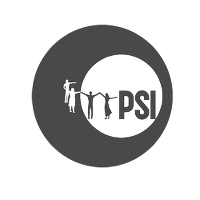By Corina Rodríguez Enríquez, DAWN
Public-Private Partnerships (PPPs) have been promoted as mechanisms to expand financing for development, opening up business opportunities to the private sector in sectors where public provision for decades was considered essential to guarantee rights. The healthcare sector is one good example.
Evidence from different countries of the global South shows that, instead of improving the coverage and quality of health provision and making it more efficient, PPPs have contributed to deepening the economic concentration in healthcare provision, making its management less transparent and limiting the guarantee of this basic human right.
Three examples taken from a project of case studies that DAWN is developing in different countries of the global South illustrate this:
In Kenya, Crystal Simeoni and Wangari Kinoti have been studying the case of the Managed Equipment Service,[1] marked by the signing of contracts between the Ministry of Health, county governments and private sector providers. Analyzing the impact of this initiative on medical equipment leasing, they conclude that it has led to gaps in priority setting, a redirection of resources to “non-essential” specialized equipment, as well as less access by women to this specialized equipment. They highlight that “amplifying these obvious gaps in prioritization is the fact that prevailing philanthro-capitalist and development assistance to the healthcare sector continues to weaken African health sectors”.
In Zimbabwe, Nyasha Masuka has been studying public-private engagements at Parirenyatwa Hospitals, [2] where she concludes that PPPs in the country’s healthcare sector were formulated without adequate participation of all the actors and there was lack of transparency and accountability. The provision of healthcare through PPPs also has been more costly, with subsequent discrimination in the quality of service provided to different population groups. The situation led to acts of resistance from healthcare professionals, legislators and citizens. Resistance to PPPs and acts of corruption associated with them resulted in dismissal of the Minister of Health and Child Care and the cancellation of all PPPs in public hospitals by the Acting Minister of Health and Child Care.
In India, Sulakshana Nandi, who has studied PPPs in the healthcare sector,[3] finds that “while essential government health services such as primary healthcare services, disease control programmes and reproductive and child health programmes are being starved of funds, the budgets for PPPs such as the publicly funded health insurance (PFHI) schemes have been increasing manifold”. She concludes, “The COVID-19 pandemic shows that despite being continually prioritized in terms of resource allocation, the Pradhan Mantri Jan Arogya Yojana (PMJAY - an expanded version of previous PFHI schemes) has failed to enable access to free healthcare, even at a time of crisis when healthcare services were needed the most. This exposes the danger of promoting and diverting public resources to such PPPs, and neglecting and under-resourcing the public health system.”
[1] Simeoni, C. and W. Kinoti (2020) “Medical Equipment Leasing in Kenya: Neocolonial Global Finance and Misplaced Health Priorities”. Work in progress.
[2] Masuka, N. (2020) “Corporate Accountability and Women´s Human Rights: A Feminist Analytical Approach to Public-Private Partnerships (PPPs) in the health sector in Zimbabwe”. Work in progress.
[3] Nandi, S. (2020) “Case study on the impact of Private Public Partnerships through Publicly-funded health insurance schemes on women in India, with special reference to Chhattisgarh state.” Work in progress.








